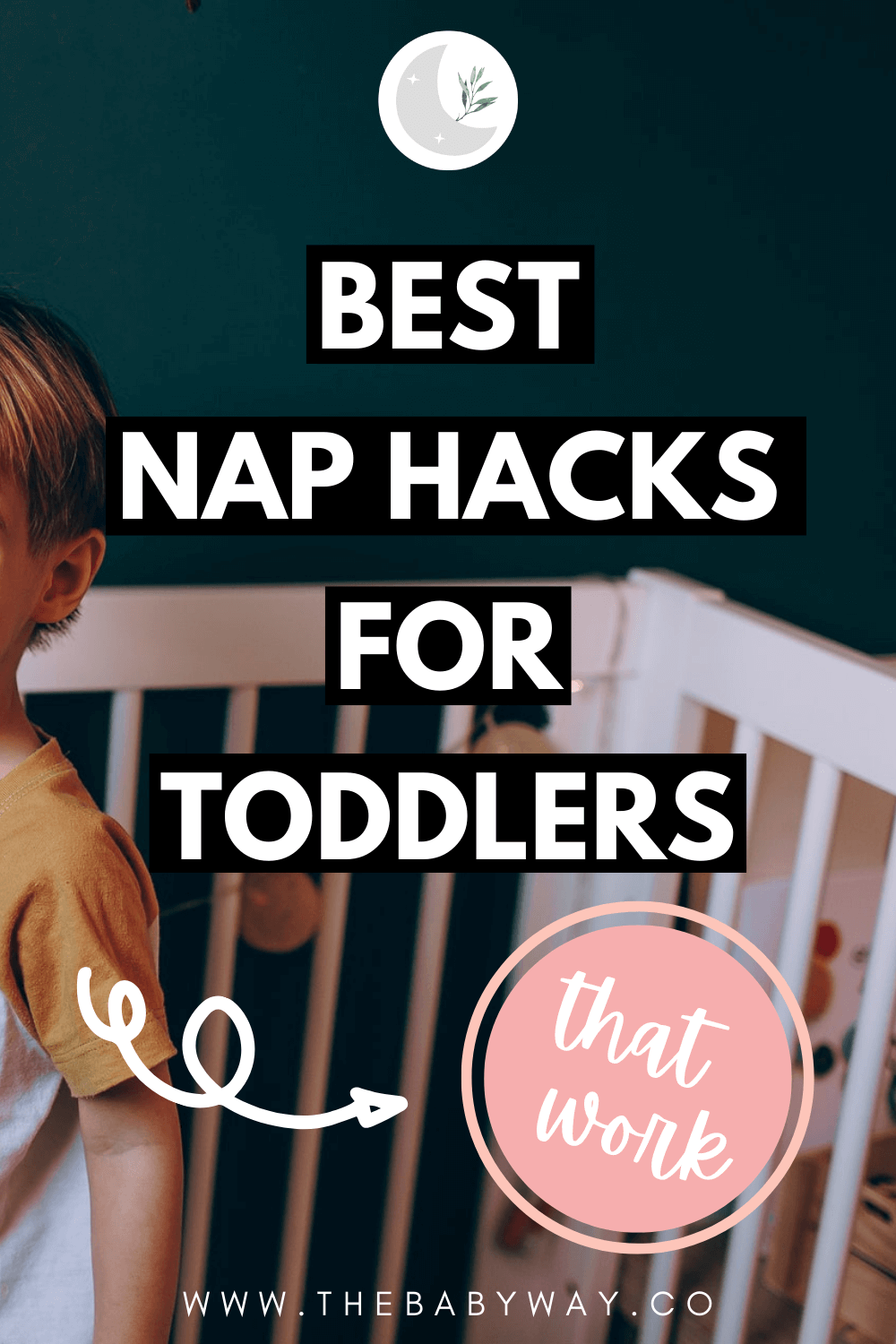Here are 6 effective ways to stop the nap time battle
It's precious. You cling to it as long as possible, never wanting to let it go.
THE NAP.
But suddenly, your toddler is not as interested in the nap as you. They don't want to sleep in the middle of the day and miss all the fun. So they fight, cry, and make it very clear: "The nap is not going to happen".
Ok, no need to panic. Because I have good news: there is nothing wrong with your toddler. Nap strikes are very common. But most importantly, there are effective ways to overcome a nap strike.
Reasons Why Your Toddler Is Fighting The Nap
Daytime Sleep Naturally Decreases
As your little one gets older, the amount of daytime sleep naturally decreases. They will need less sleep during the day. Your baby will drop one nap after another, usually starting with the afternoon nap and last the lunch nap. If your toddler is already only on one day, the length of the nap will also decrease.
Sleep Regressions
A sleep regression can also cause nap battles. During a sleep regression, your baby's usual sleep pattern can change.
For toddlers, the 18 month sleep regression is a common cause of increased night wakings, bedtime battles, and nap strikes. They experience a lot during this time.
Toddlers often get their four canine teeth and first molars, which can cause discomfort. Additionally, your child will become more independent. But independence also comes with insecurity leading to another phase of separation anxiety. They may want to have you by their side all the time, day and night.
Not enough stimulation
Your toddler needs to be tired enough to sleep. I always explain to parents that sleep cannot be forced on someone who is not tired enough.
You cannot force sleep.
I know that you cannot spend all morning entertaining your little one. We all have things to do. But your child needs their emotional and their sensory cup filled in order to take a good nap.
The Best Sleep Tips For Nap Time Battles
1. Provide Enough Stimulation
Every child has a sensory cup and an emotional cup that need to be filled every day. Filling your little one's cup can help them sleep better at night and during the day.
The sensory cup represents all activities. It consists of active play and how much your toddler is moving and exploring.
Filling your child's sensory and emotional cup will contribute to good sleep.
The emotional cup represents the connection to their caregiver. Enough one-on-one time every day with your child is necessary to fill their emotional cup. Playing with your child, making body and eye contact, and having a nice sleep routine will help fulfill their emotional needs.
To fill your child's sensory cup, get out of the house for at least half an hour. You can do simple things such as just taking a little walk around the block, something to release some energy.
2. Introduce A Nap Time Routine
We all know how important a bedtime routine is for a good night's sleep. The same goes for naps. A regular routine before bed will help your little one calm down and relax, and they will have a much easier time falling asleep.
Your nap routine does not have to be as extensive or lengthy as the bedtime routine. However, it should contain similar elements so your child recognizes the pattern. You should also try to keep the same order, e.g., eating, washing, brushing teeth, and so on. Obviously, you can skip or replace certain parts. For example, instead of taking a bath, your little one gets their hands and face washed. Make sure you finish off with a nice book and some cuddles.
3. Immediately Start Your Nap Time Routine After Lunch
This is a crucial point. The timing of the nap routine is very important. Starting your nap routine mid-play will only cause frustration for your toddler.
That's why you should always immediately start with the routine right after your meal. Leave the dishes and immediately attend to your toddler. Because if you start to clean up and, in the meantime, your little one begins to play, you will have a very hard time convincing them to sleep. They might also get too excited to play, making it harder for them to calm down for sleep.
After they are finished eating, start your routine right away by getting cleaned up, etc. I always always ALWAYS say that habits are key to success. If you do this for several days, it will become a habit for your child, and they will instinctively know that the routine is starting once they finish eating, and they will not fight back.
4. Create A Sleep Inducing Environment
Your toddler might find it difficult to sleep during the day. There is so much stimulation and light that calming down for sleep can be difficult. Light is actually supposed to stimulate our brain and signal it to stay awake.
That is why you should create a dark environment to help your toddler sleep. Black-out curtains or blinds are a must if you want to create a sleep-inducing environment.
Some parents are afraid their toddler might get used to only sleeping in their dark room during the day. But at this point, it does not really matter for two reasons. Firstly, your toddler is approaching an age where they are going to drop the nap soon anyway. Secondly, if you are afraid that your little one won't nap while out and about, there is no need to worry. Toddlers even fall asleep much easier in cars and strollers than young babies. If your toddler is tired, no light in this world will keep them from sleeping.
Additionally, I always recommend using white noise. It helps mask outside noises from your home and serves as a helpful sleep cue.
5. Have The Nap Anywhere
Sometimes toddlers are on the verge of dropping the nap altogether, and napping at home during the day is just not happening. If your toddler is still refusing to nap at home, you should consider having your nap on the go.
There is no need to worry about bad sleep habits. Your little one will drop the nap during the day anyway, and it will not affect bedtime in the evening. Little children can very well differentiate between the way they go to sleep during the day and how they go down in the evening.
At this age, you also have the advantage that even the kid who hated the stroller and the car usually comes around and starts to like it. Both my children hated the stroller when they were little babies. Once they became toddlers, they enjoyed their rides in the stroller.
So take a walk outside (which is also good for your body and mental health). Don't unnecessarily stress where your toddler is napping.
6. Delay The Nap And Keep It Short
If your toddler is about to drop the nap, you can try to delay it but keep it short. A nap at 12 PM might not work anymore.
Try having it an hour later, but let your toddler only sleep for about 40-45 minutes.
I know that a 45-minute nap is not very long and probably gives you barely enough time to do things or even rest. But if your toddler gets too much daytime sleep, their bedtime will get later, and night sleep will decrease. Or you might end up with an early morning wake.
So you should think about what you prefer: a longer nap during the day or an earlier bedtime.
At Last: Will Sleep Training Stop Naptime battles?
It seems as if sleep training is the ultimate answer to all sleep problems.
But the truth is that it will not solve your nap battles. While a nap schedule and healthy sleep habits can improve your child's sleep, traditional sleep training such as CIO will not help your little one suddenly accept the nap. You will still end up with a toddler that is protesting.
A successful daytime nap is a combination of the right timing, a balance between daytime and nighttime sleep, the right sleep environment, and enough connection between parent and child.









